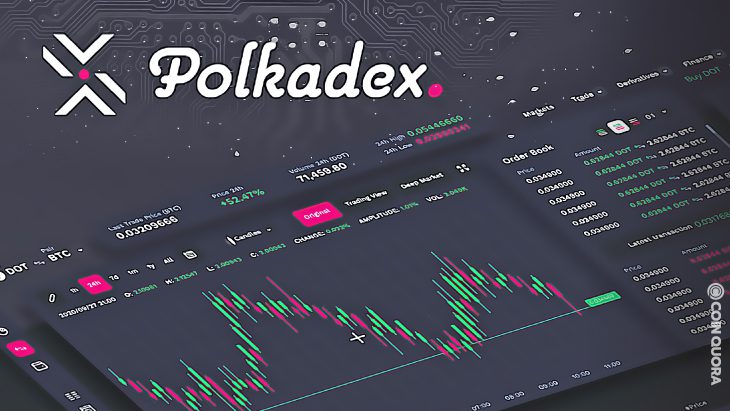- Polkadex became the first cross-chain order book-based DEX.
- A new innovative interoperability layer is now available under the name “Thea”.
- Thea is expected to be a huge improvement in user experience.
Polkadex announces its new feature under the name “Thea”, a token bridge designed to be a seamless and trustless way to connect Polkadex and Ethereum, promising to support blockchains in the future.
Following the Polkadex ethos of providing a CEX-like experience but in a noncustodial DEX, Thea’s developers said that the user interface will resemble the deposit and withdrawal functions on centralised exchanges.
Polkadex CEO Gautham J. said as a comment on this announcement by saying:
Bringing liquidity in the way users do in CEXes without compromising security of those assets is critical to the user experience of a DEX. It shouldn’t be complex or expensive. Thea is a leap in cross-chain interoperability which represents our commitment to user experience while bridging from Ethereum.
As it came in the announcement, Thea is designed to offer a CEX-like experience but in a noncustodial DEX, with a user interface that will resemble the deposit and withdrawal functions on centralised exchanges.
In a related part of the announcement, and Unlike current token bridges with centralised relayers, Thea will be run by existing Polkadex validators, who act as a decentralised group of relayers thanks to multi-party Elliptic Curve Digital Signature Algorithm (ECDSA) technology.
In other terms, Thea bridges have no central point of attack as they are as decentralised as the Polkadex network itself.
Thea is now expected to be a leap in interoperability, as well as being a huge improvement in user experience in the token bridge space. It is expected to be easier, faster and more affordable than current bridges, considering this to be one of today’s main problems.
Thea was also set to allow ERC-20 and ETH asset holders to access a non-custodial order book-exchange with high frequency trading and support for 500,000 transactions per second.
The new addition was announced to be now on Polkadex testnet, where it is scheduled to be released to the mainnet later this year.


